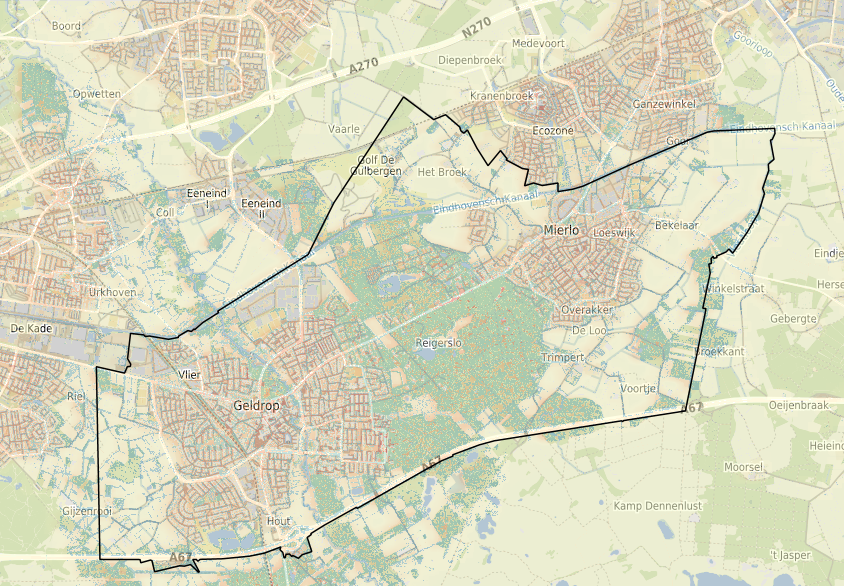Possible heat stress
For heat stress, the wind chill is more important than the actual measured air temperature. The wind chill (PET: physiological equivalent temperature) indicates the temperature as you experience it when you are outside. This makes it a better measure of heat stress than air temperature. The difference between wind chill and air temperature depends on the amount of radiation falling on you (directly from the sun and from the ground), humidity and wind.
Heat stress test results
View heat stress test results in the map viewer.
What do you see on the Map?
The Map shows the wind chill temperature on a hot day in the current and future climate. Due to climate change, warmer summer days and longer periods of heat are predicted in the future.
The Maps show well the effect of shade and greenery on the wind chill. This is especially well visible in the nature area between Geldrop and Mierlo, where it is a lot cooler than in the urban cores.

What can we do about it?
Building modifications such as green roofs or facades or proper ventilation can still keep the temperature in buildings pleasant during a heat wave. The design of outdoor space also indirectly affects the indoor climate. The spatial layout determines the degree of heat stress in a particular street or neighborhood. Neighborhoods with lots of greenery are cooler than highly urbanized neighborhoods. Trees provide shade in the home which prevents indoor temperatures from rising sharply. To make outdoor spaces pleasant during hot days, it is not only the municipality's turn! You too can apply heat measures on your own property. Consider adding grass and trees. You can get a municipal subsidy to install a green roof or to green your garden.